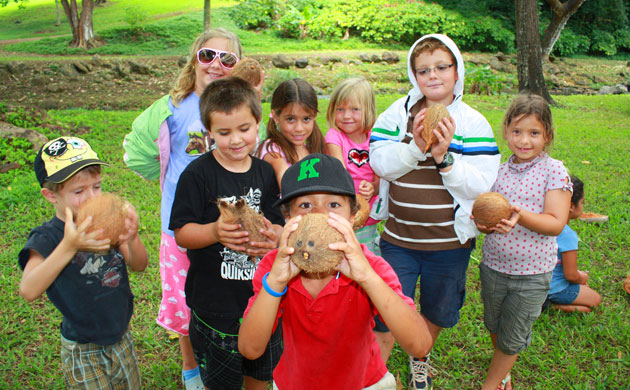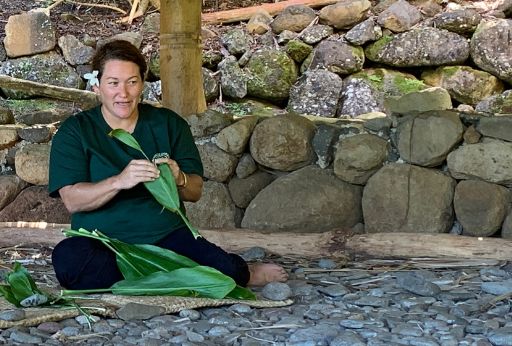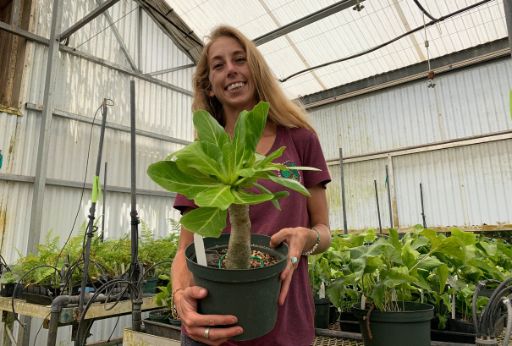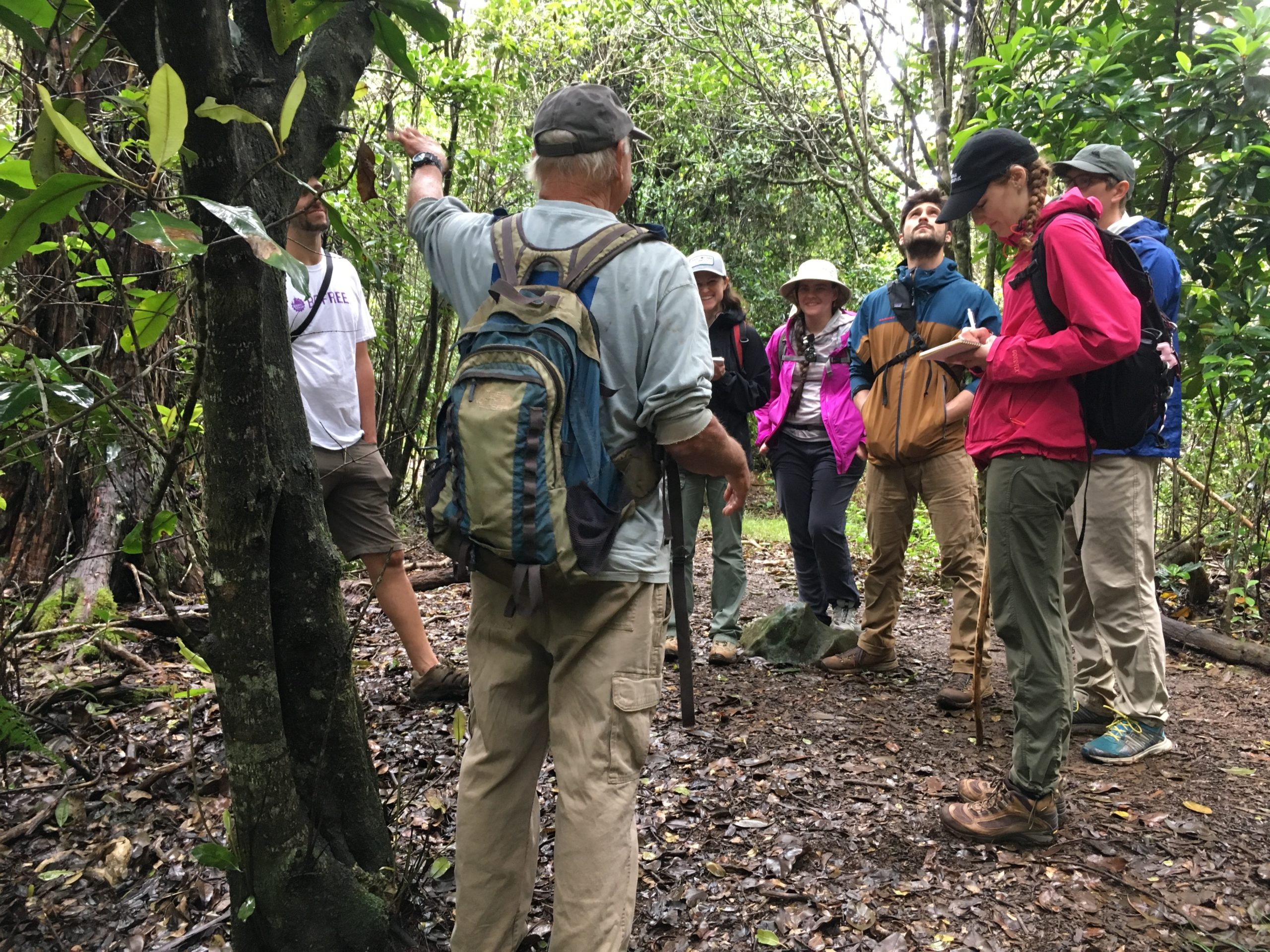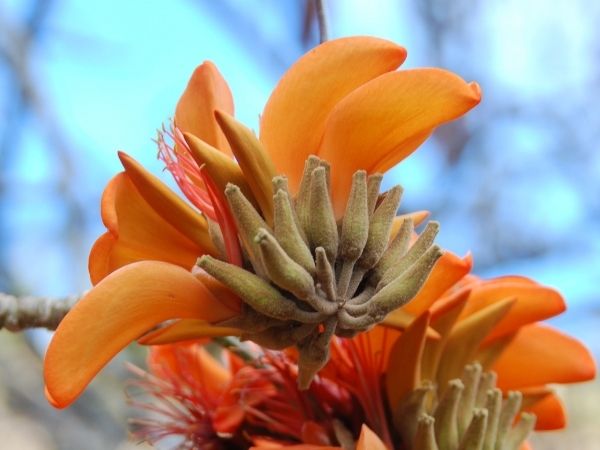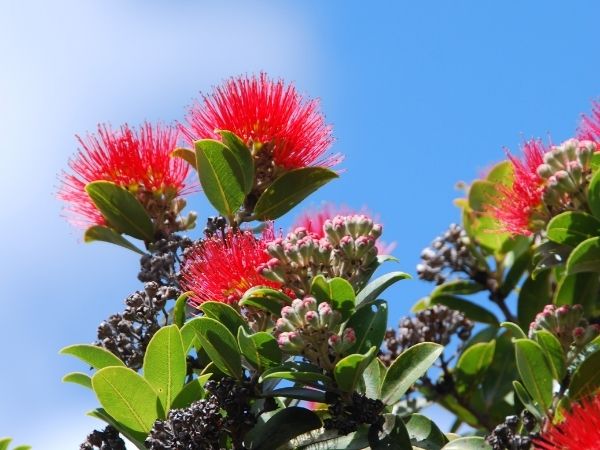Tropical Plant Database - Plant Details
Pritchardia napaliensis
Conservation Status
- IUCN: critically endangered
- USFWS: Endangered
- Listed with CPC
Genus: Pritchardia
Species: napaliensis
Species Author: H. St. John
Vernacular: Loulu
Synonyms: Pritchardia limahuliensis
Endemic to the island of Kaua'i, Pritchardia napaliensis, formerly known as Pritchardia limahuliensis, are small palms 4 to 6 meters (~ 13-20 ft) tall, with slender trunks 18 to 20 cm (~ 7-8 in) in diameter. Leaf blades are green, nearly flat, ca. 85 cm (~ 33 in) long from ligule to apex. Inflorescences composed of 1-3 panicles, shorter than to equaling petioles in flower and fruit, panicles branched to 2 (or 37) orders. Pritchardia napaliensis is rare in mesic valleys, ca. 160 m, along the Napali Coast from Hanakapi'ai to Ho'olulu valleys, Kaua'i.
Pritchardia napaliensis typically grows at a wide variation of elevations between 152 and 1,158 meters (500 and 3,800 feet) in a wide variety of habitats. Pohakuao, an upper isolated hanging valley northeast of Kalalau and southwest of Hanakoa, has relictual Diospyros sandwicensis (lama) – Metrosideros polymorpha (ohia) mesic forest and diverse mesic forest with a secondary succession of invasive introduced plant species. On Hanakapiai Valley’s steep slopes below Pohakea, the habitat is Diospyros sandwicensis – Metrosideros polymorpha mesic forest. In Hoolulu Valley where Pritchardia napaliensis grows below a small waterfall, the habitat is Diospyros sandwicensis – Pandanus tectorius (hala) lowland mesic forest. In Waiahuakua, the habitat is Metrosideros polymorpha – Pandanus tectorius mesic forest. Alealau, above Kalalau Valley, has Metrosideros polymorpha – Dicranopteris linearis montane wet forest. Lower Limahuli’s natural community is mixed wet lowland forest. In Hanakapi'ai, the habitat is Metrosideros polymorpha – Diospyros sandwicensis mesic forest.
Associated species including Alyxia stellata, Bidens forbesii (kookoolau), Bobea elatior (ahakea lau nui), Euphorbia sp. (akoko), Cyanea coriacea, C. hardyi (haha), Diospyros sandwicensis, Doodia lyonii (NCN), Freycinetia arborea, Hibiscus kokio ssp. saintjohnianus, Kadua acuminata (au), Ochrosia sp., Pipturus kauaiensis (mamake), Pleomele aurea, Psychotria mariniana, Psydrax odorata, Schiedea kauaiensis (NCN), Thelypteris globulifera (NCN), and Wikstroemia oahuensis (Tangalin 2009).
- Perlman, S. 2009. Pritchardia napaliensis, provenance report for accession number 060781 and population information. National Tropical Botanical Garden, Kalaheo, Hawaii. 2 pages. Unpublished.
- Hawaii Biodiversity and Mapping Program. 2009. Program database, Hawaii Biodiversity and Mapping Program, Honolulu, Hawaii.
Many introduced mammals damage the seeds in the wild. Hybridization may occur when several Pritchardia species are planted near each other. (Chapin, Melany H. 1990. Pritchardia remota: A Singularly Beautiful Palm. The Bulletin of the National Tropical Botanical Garden 20 (3):62-64.) (National Tropical Botanical Garden (NTBG). n.d. (b) Loulu [Pritchardia remota]. In Native Hawaiian plant information sheets. Lawai, Kauai: Hawaii Plant Conservation Center. National Tropical Botanical Garden. Unpublished Internal Papers.) (Wagner, Warren L., Darrel R. Herbst, and S. H. Sohmer. 1990. Manual of the Flowering Plants of Hawai'i.) (Hodel, D.R. 2007. A Review of the Genus Pritchardia. Palms 51(supplement): S1-S52.)
IUCN Status: Critically Endangered. Pritchardia napaliensis is assessed as Critically Endangered under criterion B1 as it has an EOO of less than 100 km2 (42 km2), is severely fragmented, and has a continuing decline in EOO, AOO, area, extent and/or quality of habitat, number of subpopulations, and number of mature individuals.
Federal Listing Status: Endangered.
Major threats to Pritchardia napaliensis include habitat degradation and grazing by feral goats (Capra hircus) and pigs (Sus scrofa) (Factor A and C); seed predation by rats (Rattus rattus) (Factor C); and competition with invasive introduced plant species.
- [USFWS] U.S. Fish and Wildlife Service. 1998. Kauai II: Addendum to the recovery plan for the Kauai plant cluster. U.S. Fish and Wildlife Service, Portland, Oregon. 84 pages + appendices.
- [USFWS] U.S. Fish and Wildlife Service. 2003. Endangered and threatened wildlife and plants; final designation or nondesignation of critical habitat for 95 plant species from the islands of Kauai and Niihau, Hawaii; final rule. Federal Register 68(39):9116-9479.
- Walsh, S., Nyberg, B., Opgenorth, M. & Wood, K. (2021). Pritchardia napaliensis. The IUCN Red List of Threatened Species 2021: e.T38651A83787908. https://dx.doi.org/10.2305/IUCN.UK.2021-1.RLTS.T38651A83787908.en.
- 026061 - collected by K. R. Wood in 1989
- 026063 - collected by K. R. Wood in 1989
- Unassigned - collected by K. R. Wood in 1990
- Unassigned - collected by K. R. Wood in 1990
- 026062 - collected by K. R. Wood in 1992
- 026043 - collected by Steve Perlman in 1992
- 026027 - collected by Steve Perlman in 1992
- Unassigned - collected by Steve Perlman in 1996
- Unassigned - collected by K. R. Wood in 1998
- 026034 - collected by K. R. Wood in 1999
- Unassigned - collected by Steve Perlman in 1999
- Unassigned - collected by K. R. Wood in 1999
- 046961 - collected by K. R. Wood in 2000
- 046962 - collected by K. R. Wood in 2000
- Unassigned - collected by K. R. Wood in 2001
- 054784 - collected by K. R. Wood in 2002
- 054783 - collected by K. R. Wood in 2002
- 038339 - collected by Melany H. Chapin in 2002
- Unassigned - collected by K. R. Wood in 2002
- 044046 - collected by K. R. Wood in 2002
- Unassigned - collected by Steve Perlman in 2005
- Unassigned - collected by K. R. Wood in 2006
- Unassigned - collected by K. R. Wood in 2008
- 048694 - collected by Clay Trauernicht in 2009
- S061856 - collected by Steve Perlman in 2009
- S061855 - collected by Wendy Kishida in 2010
- Unassigned - collected by K. R. Wood in 2011
- Unassigned - collected by Natalia Tangalin in 2012
- 094554 - collected by Emory Griffin-Noyes in 2012
- Unassigned - collected by Emory Griffin-Noyes in 2012
- 084853 - collected by K. R. Wood in 2020
- 092089 - collected by Uma Nagendra in 2023
We currently have 32 herbarium specimens for Pritchardia napaliensis in our collection. Click on any specimen below to view the herbarium sheet data.
.svg)



























